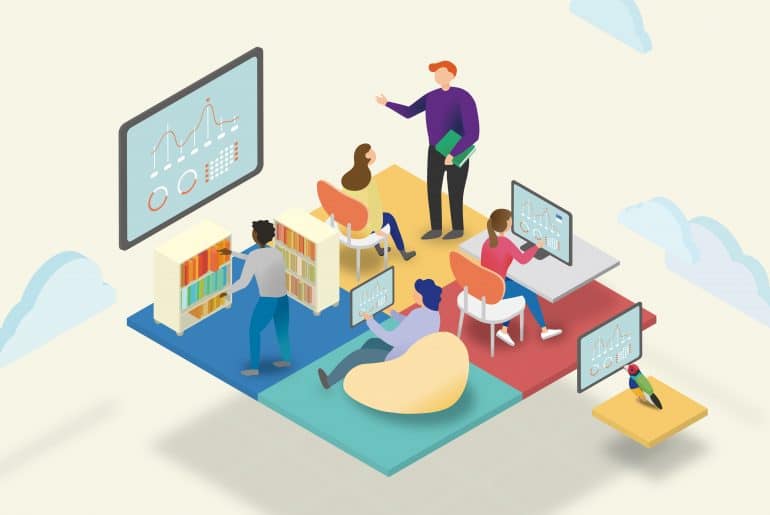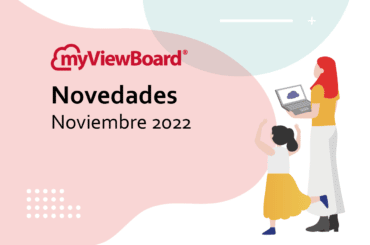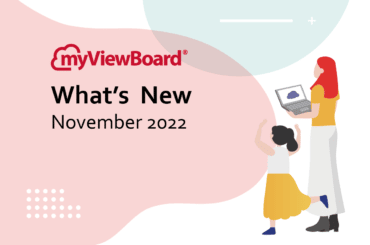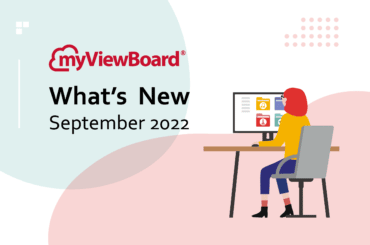This post is also available in: Español (Spanish) 繁體中文 (Chinese (Traditional))
Quick Take: Classroom design can make a huge impact on education effectiveness. Take a closer look at the:
- Differences in old classroom designs and the need for change
- Review multiple factors that will create a better learning environment
- Assess the value and need for educational technology in the classroom
Classrooms Design Then and Now
The traditional classrooms are quickly being replaced by a new breed of learning spaces and classroom designs that are evolving in response to shifts in technology.
We will reviews this evolution, taking a look at the research that supports the evolving best practices in classroom design and briefly outlining the types of classroom design ideas and technologies at the heart of these changes.
The use of the traditional one-to-many classroom arrangements is largely attributed to the need for expediency, a transmission centered philosophy of pedagogy, and the available technology of the time. Rows of seats made for easy setup, efficient use of space, and faster custodial cleaning. This physical arrangement fits nicely with the pedagogical assumption that instructors impart knowledge to students, as did the technology of the time: blackboard or overhead projector for the teacher, pencil, and paper for the student.
Today education is changing at an unprecedented pace and this traditional approach is widely seen as outdated and ineffective. The transmission (or transference) model is being replaced by a constructivist approach, which emphasizes the ways in which students join instructors and one another in making connections and developing knowledge. This shift is a result of, and further propelled by, technologies like the internet, personal computing devices, interactive displays, and collaborative software. Within this fluid environment, schools are seeking to adapt and deliver classroom spaces that better supports successful 21st-century learning. These future-forward classroom arrangement are designed to provide the flexibility to support the different ways in which learners can actively conduct experiments, perform real-world problem solving and come together in groups to ask questions, explore, assess what they know and expand their knowledge, while instructors serve as facilitators, guiding activities to address and build upon student understanding.
Many umbrella terms are used to identify these classroom design ideas, including:
- Flexible seating
- The modular classroom
- Starbucking the classroom
- Classroom cribs
- Next generation classroom design
- Evidence-based learning environments
- Learner-centered spaces
- Active learning environments / classrooms
A fifth-grade teacher who completely re-worked her classroom after exposure to a flexible seating environment at a charter school calls it the “Best Decision I Ever Made.” A participant in the CUE Bold Classroom Cribs Initiative, like many of today’s most dedicated teachers, she shares her experiences on her blog.
The Research into Classroom Design Ideas and Factors
Supporting the development of new best practices in classroom design is a growing body of research that demonstrates the ways in which the classroom environment affects student engagement and academic performance.
A groundbreaking study on student’s academic progress was released in 2012. It found that, over the course of an academic year, the progress can be influenced by 25% in either direction – positive or negative.
That is, the academic performance of a child in the best environment is expected to be 25 percent better than an equivalent child in the ‘poorest’ classroom environment. Even more astounding, the difference between the best- and worst-designed classrooms accounted for a full year’s worth of academic progress.
The authors ultimately concluded that 73% of the variation in performance among students could be attributed to five key design factors: color, choice, complexity, flexibility, and light.
- Color – Providing enough visual stimulation around the classroom through the use of color on walls, floors, and furniture
- Choice – Quality furniture including interesting and ergonomic tables and chairs that support a sense of ownership
- Complexity – Providing novel surroundings and attention-grabbing décor in balance with orderliness
- Flexibility – The ability of a classroom to accommodate students without crowding them, along with how easily furniture can be rearranged to support a variety of activities and teaching approaches.
- Light – Quality, and quantity of natural light, and degree of control with the level of lighting
Follow up studies have provided deeper insight into the relative impact of each of these factors.
At the outset of a major 2015 study the authors’ hypothesized that “clearly from the literature, it can be anticipated that the built environment of the classrooms will have a great impact on pupils’ academic performance, health, and wellbeing…” Their own study confirmed the significant impact of the physical classroom features on academic progress, finding that factors within the following three categories accounted for the differences in performance:
Naturalness – Accounting for around 50% of the impact on learning, this category relates to environmental factors required for physical comforts, such as light, sound, temperature, air quality and ‘links to nature.
Stimulation – This category refers to the vibrancy of the classroom balancing color and complexity for optimal engagement and positive behavior – and accounts for about 25% of differences in learning.
Individuality – Accounting for the remaining 25% in learning differences and of particular relevance to this paper, this category encompasses how well a classroom meets the needs of a particular group of children through offering:
- Ownership – how identifiable and personalized the room is
- Flexibility – how well the room addresses the needs of a particular age group and any changing pedagogy
- Connection – a measure of how readily the pupils can connect to the rest of the school
- Introducing Evidence – Based Classroom Design
- Educators everywhere are embracing the need to adapt the classroom design based on the forces, philosophies, and research outlined above. The specific form these spaces take differ due to curriculum, class size, space, budget constraints and the like, however, two commonalities are consistently seen: the flexibility to deliver adaptable, active learning spaces and the integration of technology that fosters collaboration and sharing.
Flexible Furnishings in the Classroom
Flexible classroom design creates learning environments that are continuously adaptable and model the resilience we want to see in our up and coming generations.
In a case study published by Edutopia.com, the website of the George Lucas Educational Foundation, the author notes that “Flexible classrooms give students a choice in what kind of learning space works best for them, and helps them to work collaboratively, communicate, and engage in critical thinking.”Tips for creating future-ready classrooms on a budget abound in the blogosphere and manufacturers of education furnishings have taken note of the trends and offer a wide variety of streamlined modular furnishings for an easy and efficient flexible arrangement.
Flexible classrooms give students a choice in what kind of learning space works best for them, and helps them to work collaboratively, communicate, and engage in critical thinking.
Among the recommendations for functional flexibility classroom design are:
- Selective seating – Offer a variety of seating options to enable student choice and facilitate different working styles/activities/projects. This can include couches, floor pillows, beanbag chairs, and traditional chair/ desk combos as well as DIY seating
- Mobility – Bookshelves and other wheeled furnishings can be rearranged to open up the room or create cozy collaborative nooks
- Collaborative configurations – Replace individual workspaces with a large round or rectangular tables, or put desks together to form a more collaborative space
- Huddle spaces – Common in corporate settings, these spaces offer convenient seating plus technology (audio, display, sharing software) for small group collaboration and content sharing. Furniture marketers and educators may refer to them using an array of terms that include: teaming tables, media tables, lounges, hublets, coves, team gardens, learning suites, informal learning environments or learning labs.

Transformational Tech in Classroom Design
The most successful active learning spaces include well-matched educational technology resources. From student devices to an interactive front-of-room display and the ability for students to digitally share their work, technology matters more than ever in today’s classroom.
Among the most common ways in which technology is being leveraged toward constructivist learning are:
- Front of room interactivity – Today’s educators seek a front-of-room display that empowers students and instructors to actively interact with content. ViewSonic offers a range of options to fit any budget that includes interactive flat panels, interactive projectors and retrofit interactive kits.
- Interactive software – Existing flat panel displays can often be updated with interactive software, such as ViewSonic® myViewBoard® for Education, which in addition to delivering robust interactive features that bring lessons to life, also supports direct file saving to Google Drive and encourage active engagement.
- Content sharing – Wireless content sharing eliminates cord clutter and makes it easy and efficient for students to display content from their personal or school-issued devices. ViewSonic options include the ViewSync® 3 wireless interactive presentation gateway, the ViewStick 2 wireless HDMI adapter and AutoProject app, and Solstice enterprise-class collaboration software.
- Huddle spaces/learning labs – Call them what you will, these tech-laden spaces foster exactly the type of active, constructivist learning 21st-century educators seek. Convenient and conducive to conversation among a small group of students, huddle spaces typically feature an interactive display or smart display and may also include content sharing capabilities such as those mentioned above for easy wireless visual data sharing from smartphones, tablets, and laptops.
- Smart desktops – Displays equipped with an integrated Android OS or thin/zero clients offer cost-effective, all-in-one solutions that conserve space and deliver easy-to-use functionality. ViewSonic offers a range of models that let users create high-impact dual display configurations or fold flat for tablet-like performance.
- Case in Point: Providing the Learning Environment That Kids Need
Since implementing flexible classrooms, Albemarle County Public Schools have found that: - Students grades have improved.
- Students seem happier and more engaged.
- Students are participating more and having more invigorating conversations.
-
We’re really looking at how we support kids working collaboratively. And we can’t do it if they’re isolated in rows and every kid is an island.” — Becky Fisher, the director of educational technology at Albemarle County Public Schools.
Conclusions on choosing the best classroom design
Significant research and educator experience alike confirm that the traditionally designed classroom – and the transference model it represents – lacks what is needed to prepare engaged 21st-century citizens. Instructors and administrators are working to apply this knowledge to new classroom design practices, leveraging flexible furnishings and collaborative technology to create spaces that promote active engagement and meaningful learning. ViewSonic offers a wide range of technologies that bring greater interactivity and collaboration to any classroom’s front of room display, huddle stations, desktops, learning labs, and more. To learn more for to ViewSonic Education Solutions and talk to one of your Solutions Experts.





1 Comment
Like to see all products
For new generation class room
Desk and board